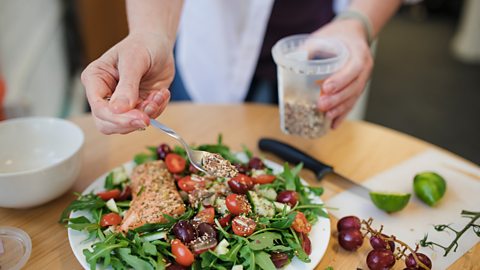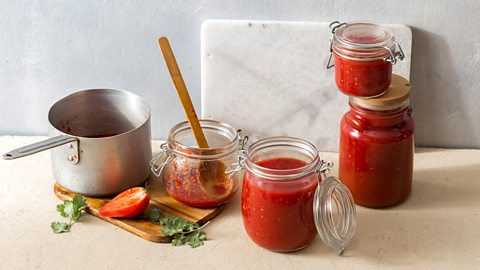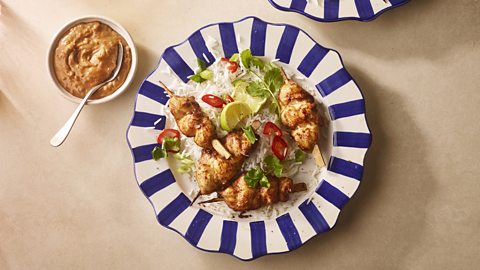How to make the perfect festive cheeseboard
By Kerstin Rodgers
Whether you’re looking for an indulgent way to while away a festive afternoon or something simple to end your Christmas dinner with, there are plenty of options when it comes to cheeseboards.

At my supper clubs, whatever I cook, whatever I bake, no matter how fabulously tasty, when I ask guests which course they liked the best, the answer is always 'the cheeseboard'.
A great cheeseboard is an easy way to impress a guest and no cooking is required. However, there are tricks to making this course an event.
Choosing your cheese
A selection of cheeses should span different types: from soft to hard; subtle to strong. The golden rule is a hard, a soft and a blue, but you could also include those made from different milks by adding a goats' or sheep cheese.
When tasting cheeses, always start with the mildest, say a soft goats' cheese, working your way through via a washed rind cheese such as Stinking Bishop, a hard cheese such as cheddar, and finally the blue cheeses – perhaps a stilton, which are the strongest.
Think also about shapes and colours of cheeses: a pyramid goats' cheese, a triangular wedge, a soft semicircle, a round truckle, an oozing slab, wrapped in leaves, veined with blue, or with an orange-hued washed rind.
For a pretty and memorable cheeseboard create labels for each cheese. People love food stories and to know where their food comes from.
Quantity
Cheese is protein-rich and filling. People don't need much to feel satisfied. If not serving as a cheeseboard but plated, give each guest about 15 to 25g of each cheese, depending on how many you are serving, to a maximum of 120g per person.
When?
You can serve cheese French-style, that is, directly after the main course, or British-style, after pudding. People tend to linger over cheese, so it depends how long you want your guests to stay.
Types of cheese
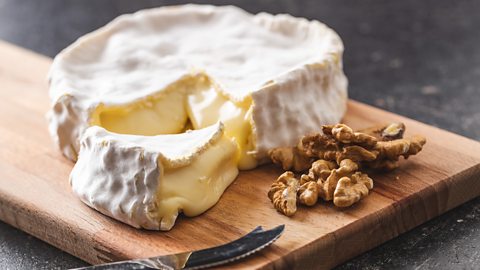
Soft cheese
While soft cheese now commonly refers to a cream cheese-style spread, what we’re talking about here are cheeses such as Brie and Camembert. These are soft-rind cheeses where you can eat the rind.
For a Langres cheese (one of my favourites) or say a Brillat-Savarin cheese (gorgeously creamy), Champagne makes a good match. I once served a whole melted Langres cheese with yeast extract fingers and Champagne for a supper club.
Washed rind cheese
These are orange-skinned soft cheeses that can be mild or very strong, depending on how long they have been matured. The powerful, even ammonia-smelling, cheeses include Stinking Bishop and Pont-l'Évêque. Prosecco, champagne or any sparkling wine suit washed rind cheese.
Goats' cheese
Goats' cheeses can range from the chalky, such as a slice of Bucheron log, ta tiny nutty Crottin de Chavignol, to the soft rind ones such as the British made, Ragstone. They match well with red wine such as rioja or the Sicilian nero d’avola.
Hard cheese
Contrary to popular wisdom, many cheeses are not well matched with red wine, but hard cheeses are the delightful exception. These include wonderful British cheeses such as Cheddar, Cheshire, Caerphilly, Lancashire and Wensleydale.
Blue cheese
Port is the classic match for British blue cheese such as Stilton or Shropshire Blue. For French blue cheese, such as Roquefort, a sweet Sauternes is the traditional match.
How to cut cheeses
Make sure you cut the cheese correctly. With a triangular cheese, shaving off the point is a complete no-no. With a square or circular cheese, cut in slices like a cake, using your knife tip to find the centre point of the cheese.
Cut from the rind to the tip to get the full flavour. The rind of soft cheeses is usually edible, and the rind of hard cheese is best discarded. The cheese nearer to the rind has more tang.
A proper cheese knife has an edge for cutting and two tips for lifting the cheese onto your plate.
How to keep and serve your cheese
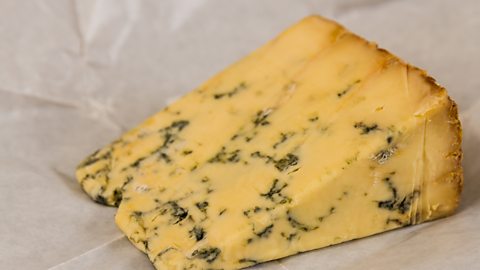
Keep at 4C in the fridge for optimum preservation. Fridge temperature gauges are cheap and worth having in the fridge for food safety.
Take most of the cheese out of the fridge one hour 30 minutes before serving to bring it to room temperature. The flavours really come out.
Soft cheeses should be taken out of the fridge 30 minutes before serving.
Once taken out of the packet, wrap any leftovers in foil or greaseproof paper and return to fridge. Hard cheeses must be freshly wrapped in greaseproof paper every time they are used. Never wrap cheese in cling film – it needs to breathe. The only exception to this rule is cream cheese.
Leftovers can also be crumbled over pasta or used in salad dressing. Make the most of your cheese.
Budget cheeseboards
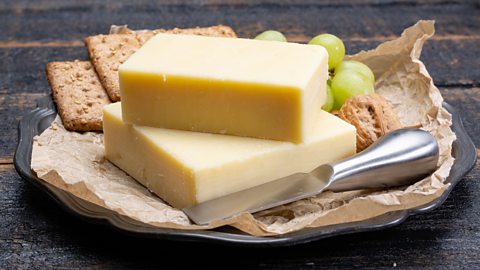
Which is the cheapest cheese per gram? Aimee Rogers has just won Young Cheesemonger of the Year 2022 at the World Cheese Awards in Wales. For affordable options, she recommends traditional British cheeses such as cheddar, or territorial cheeses such as Lancashire or Cheshire.
“The people who make them are farmers, and it's their own milk – they don't have to buy it in… Camembert or Brie and little fresh French goats' cheeses are also keenly priced.”
A good cheesemonger (including those in supermarkets) will be able to recommend good, budget options and cut to the amount you require.
At this time of year there will be likely be offers in the supermarket, but only buy them if the cheese is one that will be eaten. Always keep in mind the cheeses which will be popular with your guests. If your family isn’t keen on blue cheese, don’t buy it – you don’t need to be tied to tradition.
While a variety of cheese looks great, don't be afraid to go for the mono cheeseboard. In fact, there is an argument that it is better to serve one perfect cheese, perhaps a local speciality served with crackers, than a vast selection of less delicious cheeses.
Alternatively, if you want an assortment, cheaper options such as a simple cheddar or cream cheese (frequently branded as soft cheese) offer value for money. Don’t be afraid of budget supermarket options, there are plenty which are of a good quality.
If you’re not planning on eating your cheeseboard until after the big day, it could be worth visiting the supermarket after Christmas rather than stocking up in advance, as cheeses are frequently yellow-stickered at this point.
Accompaniments
You can include on your cheeseboard a scattering of nuts, some sliced and/or whole fruit such as pears or apples, chunks of honeycomb (blue cheese matches especially well with a drizzle of honey), chocolate, chutneys or pickles. You can also make it pretty by displaying the cheeses on leaves, say vine. Add colour by adding woody herbs such as rosemary or lavender.
Bread or crackers? The French tend to eat cheese with bread whereas Brits often use crackers.
For an extra personal touch, make your own multi-seed crackers, rye crispbread, or melt-in-the-mouth walnut and cheese biscuits. Using a mix of types of bread and cheese biscuits, of different grains, shapes and colours, will embellish your table while ensuring the tastes of every guest is catered for.
Originally published December 2022
